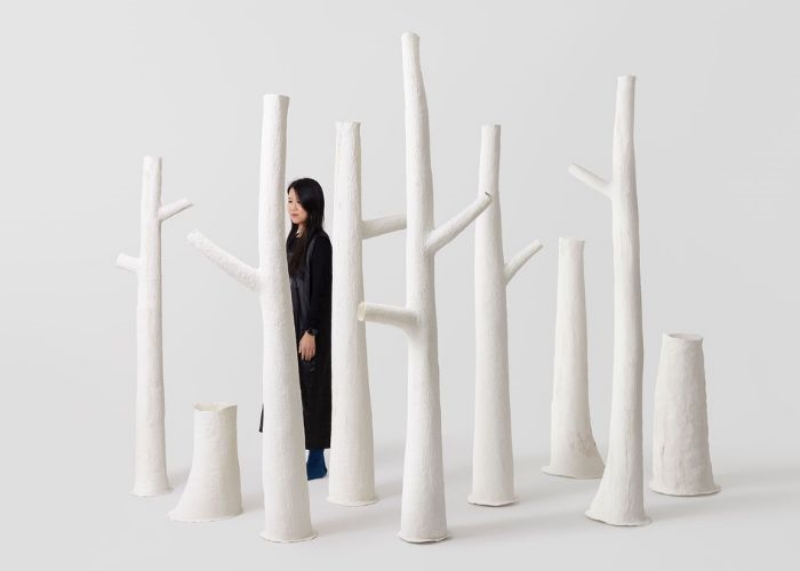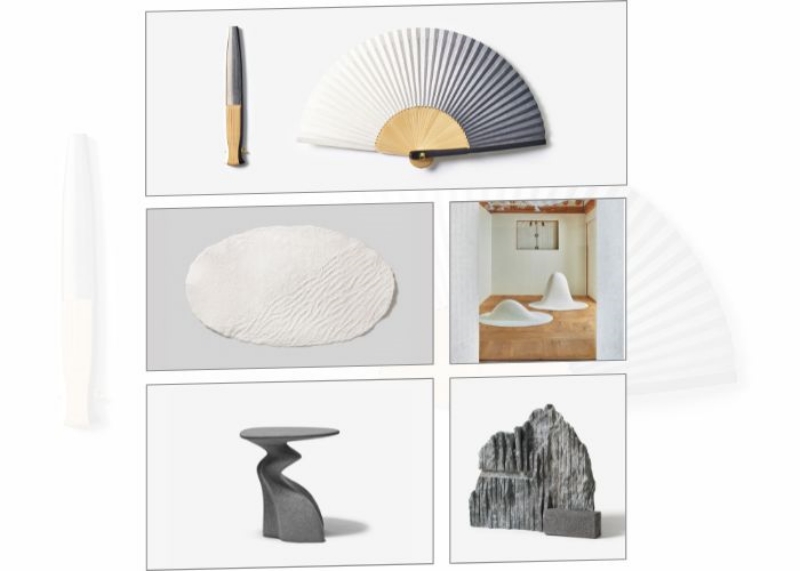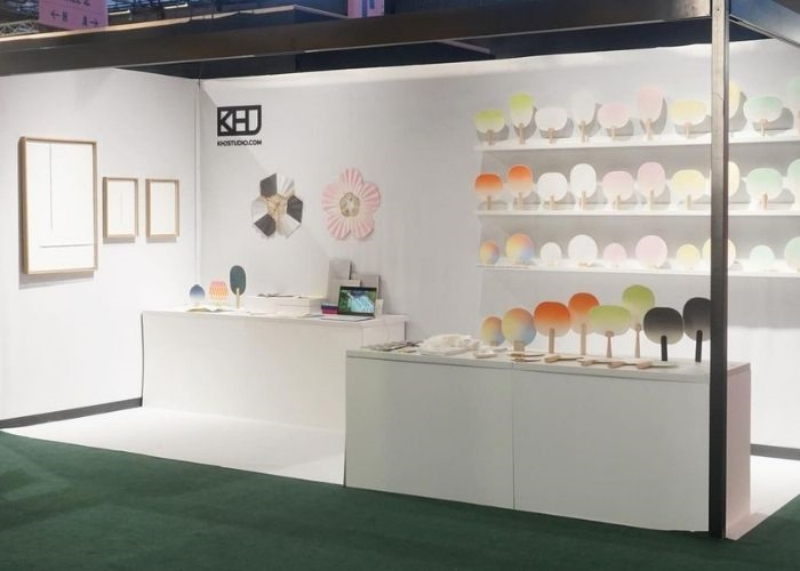- 한국어
- English
- 日本語
- 中文
- العربية
- Español
- Français
- Deutsch
- Pусский
- Tiếng Việt
- Indonesian
By Honorary Reporter Simran Singh from India
Photos = Kim Hyun Joo
Intrigued by traditional Korean crafts, I grew interested in Korean art and consequently discovered Hanji (traditional handmade paper).
Its sustainability and versatility led me to explore its role in contemporary art, connecting me with Kim Hyun Joo, a Korea-based Hanji artist known for her innovative creations that fuse traditional materials with modern design.
Her art was showcased last year at the Maison et Objet Fair in Paris, which Channel News Asia called "solidifying her place among the global elite in design and craftsmanship." She has also displayed her work at major design and craft fairs in Frankfurt, Germany, London and New York, and in 2013, she set up KHJ Studio in Paju, Gyeonggi-do Province.
The following are excerpts from an Aug. 2 video interview with Kim.

Kim Hyun Joo poses with her one of her works, a blend of traditional Hanji techniques and modern aesthetics.
Briefly introduce yourself and your work.
I'm an artist and designer focusing on sculptures, installations and craft-related lifestyle items. My design philosophy is to combine quality materials with a craft-driven approach. I deeply love nature and natural materials, mainly working with stone and Hanji.
From the top to clockwise are Kim's works "Hap-juk-seon (folding fan)," "Mountain," "Landscape_2021," "Weathering_Side_2019" and "Sky, Land, and Water (paper reliefs)," showcasing her innovative use of Hanji.
What inspired you to use these materials in your art?
My interest is in the potential of unprocessed, raw and natural materials and the organic beauty they can generate. Hanji functions both as an ancient tradition and a modern experimental medium.
I saw many artists using Hanji in unique ways and wanted to create something both traditional and modern, much like how Hanbok evolved to suit the times. As for stone, people rarely cut stone and create art using its patterns. But I create everything from scratch to create something unique.

Kim's art exhibited at last year's Maison Objet in Paris features "Blossom Fans" and paper reliefs.
Describe your creative process and how Hanji's sustainability influences your art.
I experiment with textures and create sculptural, three-dimensional objects using only dak, the mulberry fiber that is the material of Hanji. Hanji's sustainable production process involves harvesting only the annual branches of the mulberry tree without logging. The inner bark of mulberry branches is boiled, beaten into fiber, mixed with water and formed into sheets on a bamboo screen. This eco-friendly process creates a material shapeable into various textures and forms, something both sustainable and unique.
How do you decide the color palette for each piece?
My work revolves around the theme of nature, so I reflect the four seasons in my art. For instance, yellow is inspired by ginkgo trees in autumn. As for monochromatic tones, black is a universally loved color, so I try to express common feelings through it.
My next work involves objects made from the inner bark of the mulberry tree and its fibers. I'm also working on more petal-like folding fans, because the motion of a fan spreading open looks like a blossoming flower to me. Unlike most folding fans made cheaply overseas and only assembled in Korea, I want to create fans from scratch.
msjeon22@korea.kr
*This article is written by a Korea.net Honorary Reporter. Our group of Honorary Reporters are from all around the world, and they share with Korea.net their love and passion for all things Korean.